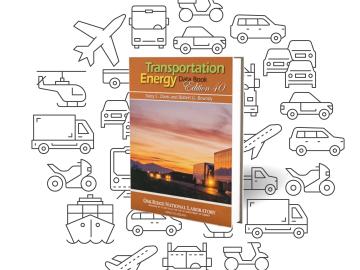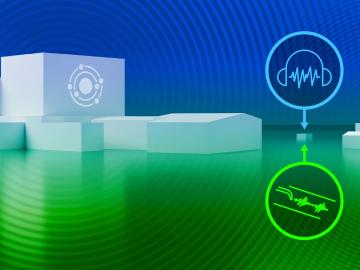
Filter News
Area of Research
News Type
News Topics
- (-) Advanced Reactors (4)
- (-) Biomedical (6)
- (-) Cybersecurity (7)
- (-) Materials (35)
- (-) Neutron Science (12)
- (-) Quantum Science (9)
- (-) Simulation (5)
- (-) Transportation (10)
- 3-D Printing/Advanced Manufacturing (11)
- Artificial Intelligence (12)
- Big Data (8)
- Bioenergy (19)
- Biology (28)
- Biotechnology (3)
- Buildings (15)
- Chemical Sciences (15)
- Clean Water (5)
- Composites (3)
- Computer Science (19)
- Coronavirus (9)
- Critical Materials (4)
- Element Discovery (1)
- Energy Storage (23)
- Environment (35)
- Exascale Computing (7)
- Fossil Energy (1)
- Frontier (9)
- Fusion (7)
- Grid (12)
- High-Performance Computing (14)
- Hydropower (8)
- Irradiation (1)
- Isotopes (4)
- ITER (2)
- Machine Learning (9)
- Materials Science (15)
- Mercury (1)
- Microscopy (13)
- Nanotechnology (9)
- National Security (17)
- Nuclear Energy (10)
- Partnerships (8)
- Physics (10)
- Polymers (5)
- Quantum Computing (7)
- Security (4)
- Space Exploration (4)
- Summit (6)
Media Contacts

ORNL scientists will present new technologies available for licensing during the annual Technology Innovation Showcase. The event is 9 a.m. to 3 p.m. Thursday, June 16, at the Manufacturing Demonstration Facility at ORNL’s Hardin Valley campus.

How an Alvin M. Weinberg Fellow is increasing security for critical infrastructure components

What’s getting Jim Szybist fired up these days? It’s the opportunity to apply his years of alternative fuel combustion and thermodynamics research to the challenge of cleaning up the hard-to-decarbonize, heavy-duty mobility sector — from airplanes to locomotives to ships and massive farm combines.

It’s been referenced in Popular Science and Newsweek, cited in the Economic Report of the President, and used by agencies to create countless federal regulations.

Researchers at ORNL are teaching microscopes to drive discoveries with an intuitive algorithm, developed at the lab’s Center for Nanophase Materials Sciences, that could guide breakthroughs in new materials for energy technologies, sensing and computing.

ORNL researchers used the nation’s fastest supercomputer to map the molecular vibrations of an important but little-studied uranium compound produced during the nuclear fuel cycle for results that could lead to a cleaner, safer world.

An Oak Ridge National Laboratory team developed a novel technique using sensors to monitor seismic and acoustic activity and machine learning to differentiate operational activities at facilities from “noise” in the recorded data.

Oak Ridge National Laboratory researchers determined that for every 5 miles per hour that drivers travel over a 50-mph speed limit, fuel economy decreases by 7% and equates to paying an extra 28 cents per gallon at current.

A team of researchers has developed a novel, machine learning–based technique to explore and identify relationships among medical concepts using electronic health record data across multiple healthcare providers.

A study led by researchers at ORNL could help make materials design as customizable as point-and-click.


